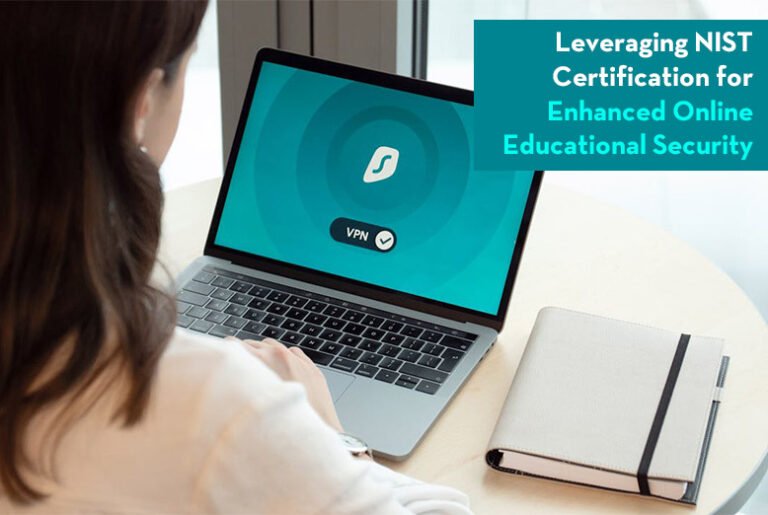In a period where electronic learning has transformed into the norm, the security of online educational stages has emerged as a fundamental concern. Institutions are becoming more vulnerable to cybersecurity threats like data breaches, identity theft, and unauthorized access. The guidelines and frameworks provided by the National Institute of Standards and Technology (NIST) can significantly enhance educational technology cybersecurity measures in this setting. This blog looks at how educational institutions can make use of NIST certification to make their online educational environments more secure.
The Importance of Cybersecurity in Online Education
The progress to web based learning stages has presented instructive foundations to a scope of network protection weaknesses. The risks range from ransomware attacks that prevent many students from accessing their educational materials to information breaches that reveal private information. These security breaches have long-term effects on an organization’s credibility and reputation in addition to causing immediate financial losses. Thus, strong network protection measures are expected to defend partners’ inclinations and functional congruity.
Understanding NIST Certification
NIST, an organization of the U.S. The Department of Commerce is involved in establishing cybersecurity practices-appropriate security standards. NIST’s Network safety System (CSF) offers an exhaustive arrangement of willful principles, rules, and best practices to oversee online protection related chances. The CSF’s center capabilities incorporate Distinguishing, Securing, Recognizing, Answering, and Recuperating, giving an undeniable level key perspective on the lifecycle of an association’s administration of network safety risk.
Steps Towards Achieving NIST Certification
Achieving NIST certification involves several key steps:
- Gap Analysis: Initially, institutions must conduct a thorough assessment of their current cybersecurity practices against the NIST standards. This step identifies vulnerabilities and sets the roadmap for alignment with NIST guidelines.
- Implementation: This phase involves adopting the appropriate NIST controls to mitigate identified risks. Implementations might include technological upgrades, process enhancements, and policy modifications.
- Certification Process: After implementation, institutions undergo a formal evaluation by an external auditor to ensure compliance with NIST standards and this results in NIST certification.
Leveraging NIST Certification for Enhanced Security
Once certified, institutions can utilize their alignment with NIST standards to significantly enhance their cybersecurity posture:
- Risk Management: Assessments and updates on a regular basis guarantee that the security measures are up to date with changing threats.
- Enhanced Data Protection: Secure sensitive data by putting in place the controls that NIST recommends, like access controls and encryption.
- Incident Response: With the help of the framework provided by NIST, organizations are able to come up with efficient approaches to incident response that will lessen the impact of a security breach.
Practical Tips for Educators and Administrators
Educators and administrators play pivotal roles in maintaining cybersecurity:
- Continuous Education: Standard instructional courses on network protection best practices are vital.
- Policy Enforcement: Guaranteeing that all staff stick to security strategies and techniques is critical to supporting a protected climate.
- Engaging Students: It’s also important to educate students about their critical role in maintaining cybersecurity, such as recognizing phishing attacks and securing their data.
The Future of Online Education Security with NIST
As digital dangers advance, so too should the techniques to battle them. In order to address brand-new issues and vulnerabilities, NIST regularly updates its frameworks. Educational institutions that stay aligned with these updates not only secure their assets but also position themselves as leaders in the critical field of online educational security.
Conclusion
In conclusion, NIST certification offers a structured approach to enhancing cybersecurity in online educational settings. By aligning with NIST standards, institutions can protect their stakeholders, build trust, and ensure a secure educational experience. The journey toward NIST certification is a proactive step toward achieving a robust educational environment that is prepared to meet current and future cybersecurity challenges.
Securing online education through NIST not only protects against immediate threats but also strengthens the institution’s reputation for commitment to security and privacy—a crucial asset in the digital age.
Also Read: Why ITIL Foundation Certification Is a Must-Have for IT Professionals



